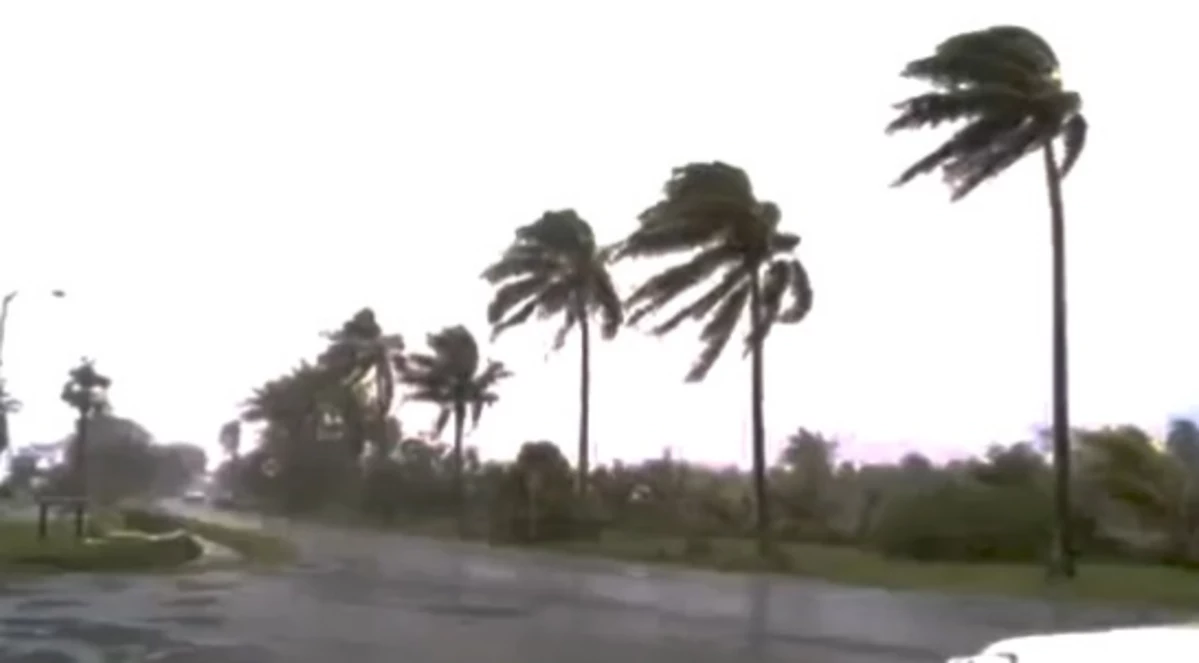Climate Whiplash: A Call To Action For Global City Resilience

Table of Contents
Understanding the Impacts of Climate Whiplash on Cities
Climate whiplash isn't just about isolated extreme weather events; it's about the cascading effects of these events on already strained urban systems. The rapid and unpredictable shifts create a perfect storm of challenges.
Infrastructure Vulnerability
Aging infrastructure, often designed for predictable weather patterns, is particularly vulnerable to climate whiplash. Extreme weather events quickly overwhelm existing systems, leading to costly and disruptive failures.
- Examples of infrastructure failures:
- Hurricane-force winds destroying power lines and causing widespread blackouts.
- Flash floods collapsing roads and bridges, severing transportation links.
- Prolonged droughts causing water shortages and impacting sanitation systems.
- Intense heatwaves damaging roads and railway tracks through expansion and contraction.
- Economic costs: Repairs and replacements of damaged infrastructure cost billions annually, placing a strain on already tight municipal budgets. These costs are often exacerbated by the need for more resilient, climate-proof replacements.
- Disruptions to essential services: Damage to infrastructure directly impacts essential services like water supply, electricity, healthcare, and emergency response, leaving vulnerable populations at risk. The disruption to these services can have long-term economic and social consequences.
Public Health Risks
The unpredictable nature of climate whiplash significantly impacts public health. Extreme heat, air pollution from wildfires, and the spread of infectious diseases are just some of the consequences.
- Increased heatstroke and respiratory illnesses: Heatwaves, often intensified by the urban heat island effect, lead to a surge in heatstroke cases and respiratory problems.
- Mental health impacts: The stress and trauma associated with experiencing extreme weather events, displacement, and loss of property significantly impact mental well-being.
- Strain on healthcare systems: Climate-related health emergencies place an immense burden on already stretched healthcare systems, requiring increased resources and personnel. The capacity of healthcare systems to respond effectively to multiple concurrent crises is often significantly reduced during climate whiplash events.
Economic Disruptions
Climate whiplash profoundly impacts the economic stability of cities. Businesses face disruptions, supply chains are compromised, and overall economic growth is hindered.
- Loss of productivity: Extreme weather events force businesses to close, halting production and reducing worker productivity.
- Damage to businesses and commercial properties: Floods, fires, and high winds cause extensive damage to commercial properties, leading to significant financial losses for businesses.
- Increased insurance costs: The increased frequency and severity of climate-related disasters drive up insurance premiums, making it harder for businesses and individuals to protect themselves against future risks. Insurance companies are also re-evaluating risk assessments and coverage, potentially leaving many businesses uninsured or underinsured.
Building Resilient Cities: Strategies and Solutions
Building resilient cities requires a multi-faceted approach involving significant investment, innovative strategies, and collaborative action.
Investing in Climate-Resilient Infrastructure
Designing and constructing infrastructure that can withstand extreme weather events is paramount. This involves moving beyond traditional building practices to embrace more sustainable and resilient solutions.
- Examples of climate-resilient infrastructure: Green infrastructure (e.g., green roofs, permeable pavements) helps manage stormwater runoff, reducing the risk of flooding. Improved flood defenses and seawalls protect coastal cities from rising sea levels and storm surges. Investing in robust and adaptable water distribution networks improves drought resilience.
- Utilizing sustainable building materials and practices: Using sustainable building materials with higher durability and longevity, reduces the long-term costs of infrastructure maintenance and replacement. Employing advanced construction techniques improves the structural integrity and resilience of buildings and other infrastructure against extreme weather events.
- Importance of long-term planning and investment: Climate-resilient infrastructure requires long-term planning and significant upfront investment, but the cost of inaction far outweighs the cost of proactive planning.
Enhancing Early Warning Systems and Emergency Preparedness
Advanced warning systems and well-rehearsed emergency response plans are crucial for minimizing the impact of climate whiplash events.
- Importance of community engagement and education: Educating communities about the risks of climate whiplash and preparing them for emergencies is critical. Community participation in developing and implementing preparedness plans increases effectiveness and promotes community resilience.
- Investing in technology for better prediction and monitoring: Advanced meteorological technology, coupled with improved data analysis and modelling, improves the accuracy and timeliness of weather forecasts and early warning systems.
- Developing robust evacuation and shelter strategies: Cities need to develop comprehensive evacuation plans and ensure sufficient shelter capacity to protect vulnerable populations during extreme weather events.
Promoting Sustainable Urban Development
Sustainable urban planning plays a crucial role in mitigating the impacts of climate whiplash. Prioritizing green spaces, efficient transportation, and sustainable water management is vital.
- Green spaces and urban forestry: Increasing green spaces and urban forests reduces the urban heat island effect, minimizing the impact of heatwaves and improving air quality.
- Sustainable transportation systems: Reducing reliance on private vehicles through investment in public transit and cycling infrastructure reduces greenhouse gas emissions and improves air quality.
- Water management strategies: Implementing effective water management strategies, including water harvesting and efficient irrigation systems, improves drought resilience and reduces the risk of water shortages.
Global Collaboration and Policy Initiatives
Addressing climate whiplash requires global collaboration and strong policy frameworks.
International Cooperation
International cooperation is essential for sharing best practices, mobilizing resources, and strengthening commitments to climate action.
- Sharing best practices and knowledge: International collaboration facilitates the exchange of knowledge and experience in developing and implementing climate resilience strategies.
- Funding initiatives to support vulnerable cities: International funding mechanisms are crucial to support vulnerable cities in implementing climate adaptation and mitigation measures.
- Strengthening international agreements and commitments: Strong international agreements, such as the Paris Agreement, provide a framework for global action on climate change.
Policy Frameworks and Regulations
Effective policies and regulations are crucial for driving the transition to more resilient cities.
- Building codes and regulations: Updating building codes and regulations to incorporate climate resilience principles ensures that new infrastructure is built to withstand extreme weather events.
- Policies promoting sustainable development and green infrastructure: Policies incentivizing the adoption of green infrastructure and sustainable development practices drive the transformation of urban environments.
- Financial incentives for climate adaptation measures: Financial incentives and tax breaks can encourage businesses and individuals to invest in climate adaptation measures.
Conclusion
Climate whiplash poses a profound threat to global cities, demanding urgent action to build resilience and safeguard communities. The impacts on infrastructure, public health, and economies are substantial and demand a comprehensive response. By investing in climate-resilient infrastructure, enhancing early warning systems, promoting sustainable urban development, and fostering global collaboration, we can create cities capable of withstanding the unpredictable challenges of climate change. Let's actively participate in mitigating the effects of climate whiplash and building resilient urban environments for a sustainable future. The time for decisive action on climate whiplash is now.

Featured Posts
-
 San Diego Padres Pregame Update Lineup Changes And Notes
May 28, 2025
San Diego Padres Pregame Update Lineup Changes And Notes
May 28, 2025 -
 Amas 2024 Rose Rm Jimin Ateez And Stray Kids Vie For Awards
May 28, 2025
Amas 2024 Rose Rm Jimin Ateez And Stray Kids Vie For Awards
May 28, 2025 -
 Us Envoy Offers Gaza Ceasefire Deal Hamas Urged To Accept
May 28, 2025
Us Envoy Offers Gaza Ceasefire Deal Hamas Urged To Accept
May 28, 2025 -
 The Effects Of Climate Change On Rainfall In Western Massachusetts
May 28, 2025
The Effects Of Climate Change On Rainfall In Western Massachusetts
May 28, 2025 -
 The Growing Crisis At Newark Airport What You Need To Know
May 28, 2025
The Growing Crisis At Newark Airport What You Need To Know
May 28, 2025
